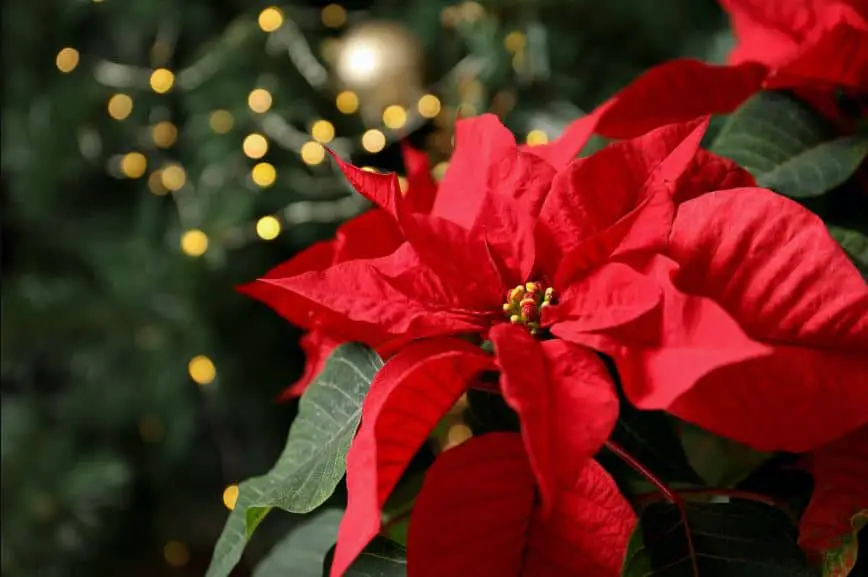How are Euphorbia pulcherrima, or poinsettias, cared for? Carefully. Precise growth conditions are necessary for these picky short-day plants to maintain their Christmas flowers. Your Christmas poinsettia should, however, continue to bloom with appropriate care or, at the very least, continue to look good for many weeks following.

Holiday Plant Care for Poinsettias
The best light, water, and temperature conditions are the first step in poinsettia care. They normally like semi-cool, humid environments during the holidays when they are in full bloom, as well as strong, indirect light and plenty of moisture. Water poinsettia plants carefully, being careful not to drown them by ensuring ample drainage. Likewise, keep them out of saucers full of water since this might cause root rot. Humidifiers and the addition of plants nearby may both help dry spaces become more humid.
You can abandon the plant once the flower bracts have dropped or retain it for another year. Reduce routine watering if you keep caring for poinsettias so the plant may dry out a little. Do not let it entirely dry out, however. Additionally, move the poinsettia plant to a dark, cold location until approximately April. 0.0 of 0.0 seconds 0% volume
Fertilizing Poinsettia Plants
It is never advised to fertilize poinsettia plants when they are blooming. When maintaining poinsettias beyond the Christmas season, fertilize them only. Apply a full houseplant fertilizer every two weeks or once every month. If the poinsettia plant is given the right climate, it should grow again in a few weeks.
After the Holidays, Care for Poinsettias
Return the plant to a bright spot in the spring and give it plenty of water. At least 6 inches (15 cm) should be removed from the pot’s rim on all canes (branches). Repotting the poinsettia with the same soil could also be a smart move. While poinsettias may be maintained all summer long, many people transfer them outside and plant them in a sunny but sheltered section of the flower garden by burying the pot in the earth. Any method is acceptable.
Pinch off the tips of the new growth once it has grown between 6 and 10 inches (15–24 cm) to promote branching. This may be done once every month until the middle of August. Bring the poinsettia indoors as the autumn evenings start to get longer.
Light becomes essential for managing poinsettia plants from around September to November. Poinsettia plants need prolonged periods of nighttime darkness to promote flowering (about 12 hours). As a result, either relocate the poinsettia to a spot without any nocturnal lighting or cover it with a box. The plant needs a lot of light throughout the day to absorb the energy for blossoming. Additionally advised are warmer days (65-70 F/18-21 C) and milder nights (55-60 F/13-16 C). Once flowering has begun, provide somewhat chilly and humid areas with plenty of moisture and bright, indirect light.
Leaves on the poinsettia plant are falling off.
It is important to figure out the probable cause if your poinsettia plant’s leaves are dropping off since in some cases, the solution is straightforward. Environmental factors like warm, dry weather often cause leaf drop. Stress may also play a role. Water the plant often and keep it in a cool, draft-free environment. If everything else fails, it could be necessary to dispose of the plant.
Knowing how to care for poinsettias can allow you to retain these attractive plants all year. You may enjoy the beauty of poinsettia plants for many years with careful maintenance.

